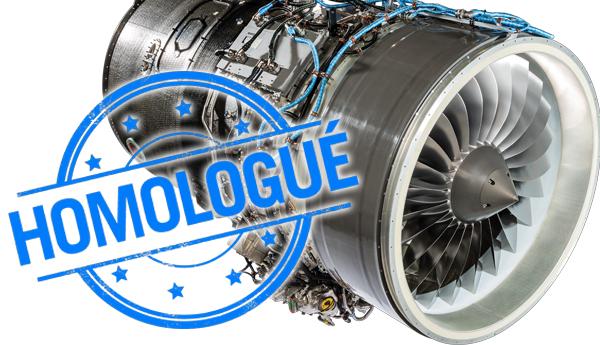Donc le PW800, gamme de poussée 10 à 20 000 lbs
Quel BPR ?
Le coeur est similaire à celui du PW1217G, les parties basses pressions étant évidemment différents
http://www.pw.utc.com/media_center/assets/pwc_pw800_turbofan_engine.pdf
Il présente l'avantage d'être plus (très ?) léger
http://www.ainonline.com/news/single-news-page/article/geared-turbofan-for-bizav-not-suited-to-all-missions-29571/
TF that will power the MRJ, but development of that turbofan engine is now on the shelf too, pending a new business jet application. Work on the core continues, however.
“We designed one core to use on both the [MRJ-size] GTF and a business jet turbofan producing between 10,000 and 18,000 pounds of thrust,” said Dussault. “The Columbus would have used the lower end of that thrust spread, and something in the class of the G650 would use the upper end.”
P&WC did propose PW800-series engines to Bombardier to power the new Global 7000/8000 long-haul jets, but the Canadian airframer instead opted for GE Aviation’s new Tech-X engines to power its new flagships. P&WC remains on the prowl, confident that demand for business aviation in India and Asia will move more long-range bizjet contenders from design to manufacture and inspire more engine applications for which to compete.
Compatibility of GTFs with business jets is more a function of mission length than airplane size, according to Dussault. “We’ve done the ‘trades’ for a long-range business jet, and we weren’t getting enough fuel economy to warrant having the larger size and greater weight of a GTF,” he explained. “Although you get the fuel advantage you need, geared engines are larger and heavier, and I think there would be resistance against making the airframes bigger and heavier to get the efficiencies that come from a GTF. The GTF is scalable, but it depends on the mission.”
Suited to Small Jets
In Dussault’s view: “A GTF is better suited to smaller business jets because they do not fly the mission profile of the large-cabin business jets, which is to climb to high altitudes quickly and stay there for great distances, but rather the smaller jets fly 1,500 miles or so.” Even if business jets do not adopt the big geared fan up front, they benefit from the GTF’s core. “The key enabler for a high-efficiency turbofan such as the PW800 is the core,” he maintained. “And people like the fact that when the PW800 does join the business-jet fleet its core will have accumulated a million hours in the C Series and MRJ. It is designed to provide the durability and reliability that commercial operations require.”
P&WC’s PW800 series might have fallen off the Columbus and lost out to GE on the new Globals, but the company is on some solid programs with the PW300 series (Falcon 2000LX and 7X, Learjet 60 and 85, Cessna Citation Sovereign and Hawker 4000) and PW600 series (1,700 of which have been shipped for Eclipse 500s, Mustangs and Phenom 100s since the engine was certified in 2006). P&WC engines are also aboard three new helicopters a-birthing–the EC175, S-76D and AW169–all of which are destined to play a key role in the expanding search to satisfy our insatiable appetite for oil.
The Canada-based engine makers’s workforce has remained “fairly stable” over the course of the recession. The payroll currently stands at around 9,200, down from a little over 10,000, but of the 1,500 departures through attrition and early-retirement packages, none affected the ranks of engineers. “Engineering was never cut back and in fact grew. We’re hiring more engineers now,” said Dussault. “Even in downturns we try to maintain the same level of investment in engineering so we’re poised to take advantage of a recovery.”






 !
!